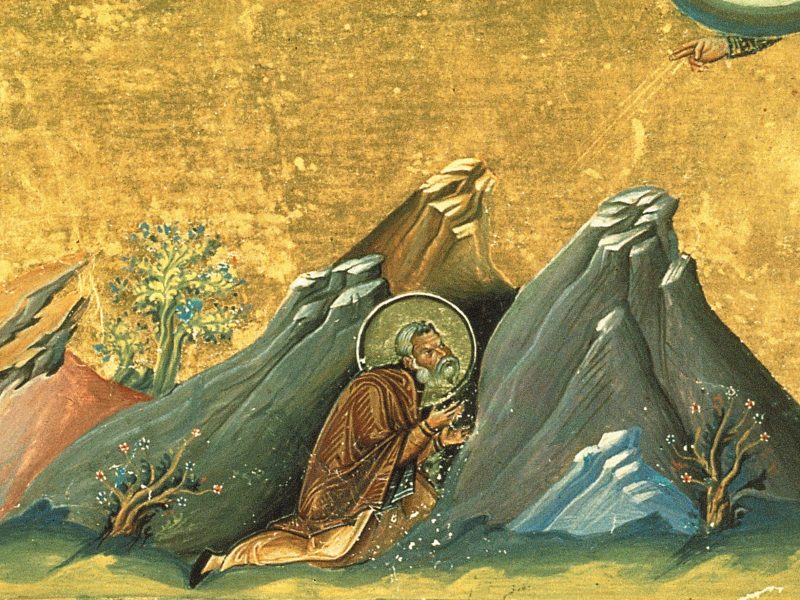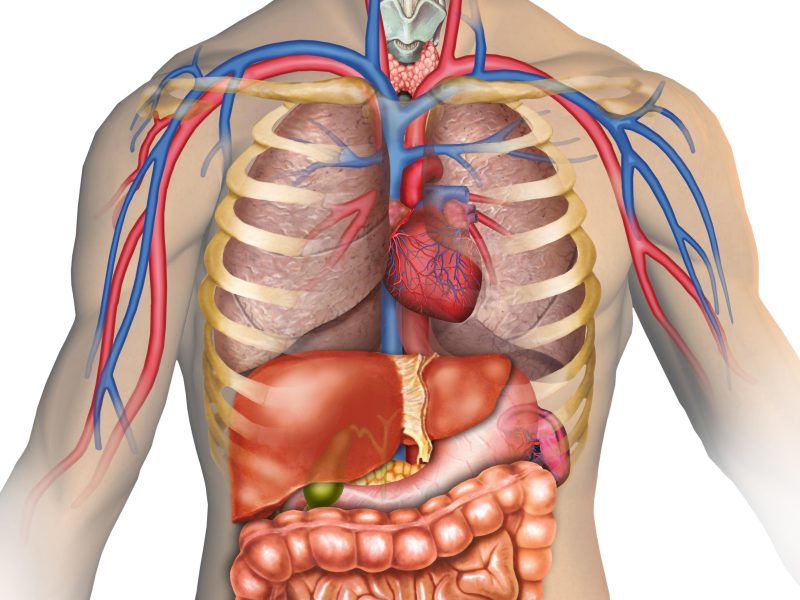by Gideon Lazar
It is frequently argued today that Genesis 1 and 2 are two separate creation accounts. Genesis 1 comes from the Priestly Source, whereas Genesis 2 comes from the earlier Yahwist Source. This contradicts the Catholic view, taught by the magisterium, that the Pentateuch was substantially authored by Moses, and thus both creation accounts come from Moses.
While no manuscript evidence is ever provided for the claim that these come from two separate sources, it is frequently argued on the basis of the fact that they describe the creation accounts in two different ways. Especially powerful here is the apparent direct contradiction of Genesis 1 in Genesis 2:19.
This argument has already been addressed in another article on our blog. Genesis 2 is simply giving a more detailed account of the sixth day, and nothing in the Hebrew grammar of Genesis 2 suggests a contradiction with Genesis 1.
However, merely noting that there is no contradiction is not enough. After all, many things don’t contradict that were written by different authors. However, if it can be shown that Genesis 2 is using Genesis 1, instead of Genesis 2 being written first, then they can be established to be a united creation account.
How is Genesis 2 using Genesis 1? Genesis 2 is mirroring Genesis 1’s ordering of the days. Repetitions of the creation pattern in later Biblical texts is a frequently noted phenomenon. The rest of this article with be a close commentary on Genesis 2 to see how the patterns in it line up with Genesis 1.
4 These are the generations of the heavens and the earth when they were created. In the day that the Lord God made the earth and the heavens, 5 when no plant of the field was yet in the earth and no herb of the field had yet sprung up—for the Lord God had not caused it to rain upon the earth, and there was no man to till the ground; 6 but a mist went up from the earth and watered the whole face of the ground— 7 then the Lord God formed man of dust from the ground, and breathed into his nostrils the breath of life; and man became a living being.
The account starts off with an allusion to how the world was initially without form and void. Here the fields are void of vegetation. A mist, representing the Spirit, goes out over the Earth and brings about a new creation, just as He did on day one.
Likewise, on day one God creates light in the world as an image of Himself. Here, God creates man, the truest image of Himself, to carry on His own work of creation in the world. There is also an allusion back to the work of the Spirit in the creation of man, as man has the breath of life come into Him from God. He is thus the union of Heaven and Earth. This is illuminates why Moses has here alluded back to Genesis 1. Man’s creation is a microcosm of the whole creation.
Some point out here an apparent contradiction with Genesis 1, which says the plants were already made on the third day. There are a few possible ways to solve that. One way is to suggest that different types of plants were created on each day. Genesis 1 only says that seed bearing plants were created on day three, whereas now shrubs are created. Another possibility is that the seeds were created on day three, but they did not sprout up until day six. A final possibility is that there is a gap of three days’ time between verses six and seven. Thus, there are many possible ways to solve this issue.
8 And the Lord God planted a garden in Eden, in the east; and there he put the man whom he had formed.
The creation of the garden corresponds to the second day of creation, where the firmament was created. The garden forms the boundary between the East side of Eden and the rest of the world. Eden is where God’s presence on Earth is, corresponding to Heaven. The outer world is Earth. Thus, the three sections of the world of Genesis 2 corresponds with the three-story universe created in Genesis 2. This is further reaffirmed by Moses in the section of the tabernacle. While much more could be said on this, for now we can simply lay out this triadic structure below and say more on it in future articles. What’s important here is that the garden is the mediating boundary between God’s presence and the world, just as the firmament is the mediating boundary between Heaven and Earth.

9 And out of the ground the Lord God made to grow every tree that is pleasant to the sight and good for food, the tree of life also in the midst of the garden, and the tree of the knowledge of good and evil. 10 A river flowed out of Eden to water the garden, and there it divided and became four rivers. 11 The name of the first is Pishon; it is the one which flows around the whole land of Hav′ilah, where there is gold; 12 and the gold of that land is good; bdellium and onyx stone are there. 13 The name of the second river is Gihon; it is the one which flows around the whole land of Cush. 14 And the name of the third river is Tigris, which flows east of Assyria. And the fourth river is the Euphra′tes.
The creation of the trees alludes back to their creation in Genesis 1. It is important to note that the only plants explicitly said to be created on day three are “plants yielding seed, and fruit trees bearing fruit in which is their seed” (Gen 1:11). This is an allusion to wheat and fruit trees, the two types of plants used to make sacraments. While other plants may have been created on this day as well, Moses draws our attention to the creation of the sacramental plants because the third day in creation patterns frequently connects to the sacraments. We see this here when the Tree of Life and the Tree of the Knowledge of Good and Evil are created. These are the sacramental plants of the garden. There is a lot more that could be said on this point, but that will have to be for another article.
We also see the division of land through water here. Whereas the land came out from the water on day three, here water comes back over the land to divide it into nations. There may also be some fourth day themes mixed in here with the different metals and gemstones being symbolic of heavenly bodies.
15 The Lord God took the man and put him in the garden of Eden to till it and keep it.
The heavenly bodies are placed in the heavens “to rule” the day and night (Gen 1:16). Man is placed into the garden to rule it.
16 And the Lord God commanded the man, saying, “You may freely eat of every tree of the garden; 17 but of the tree of the knowledge of good and evil you shall not eat, for in the day that you eat of it you shall die.”
This part has the least obvious connection. However, there is a connection. Day five sections of creation patterns frequently has to do with commands or God’s glory. This is because day five is the first time God gives a command (Gen 1:22) and because God creates “swarms” of animals in the waters and skies on this day, symbolizing the Glory Cloud of God.
Both of these elements are present here. God gives his first command to man at this point. In addition, there is a tree of God’s presence man is standing before and if man eats it, God will come in judgement, just as God frequently comes on his Glory Cloud in judgement in scripture.
18 Then the Lord God said, “It is not good that the man should be alone; I will make him a helper fit for him.” 19 So out of the ground the Lord God formed every beast of the field and every bird of the air, and brought them to the man to see what he would call them; and whatever the man called every living creature, that was its name. 20 The man gave names to all cattle, and to the birds of the air, and to every beast of the field; but for the man there was not found a helper fit for him.
The connections with day six here are quite obvious. The animals and a partner for man are the major concerns.
21 So the Lord God caused a deep sleep to fall upon the man, and while he slept took one of his ribs and closed up its place with flesh;
The connection with the seventh day here is again quite obvious. Man goes into a deep sleep of rest, just as God will after creating Eve.
22 and the rib which the Lord God had taken from the man he made into a woman and brought her to the man. 23 Then the man said, “This at last is bone of my bones and flesh of my flesh; she shall be called Woman, because she was taken out of Man.” 24 Therefore a man leaves his father and his mother and cleaves to his wife, and they become one flesh. 25 And the man and his wife were both naked, and were not ashamed.
Amazingly, this pattern is also Christological as there is an eighth day to the pattern. Just as Christ rose from the tomb to be greeted by women, a symbol of how he was united to His bride the Church in His resurrection, so too did Adam awake on the eighth day of this pattern to meet Eve, his bride.
Thus, as we have seen, the pattern of the creation week is deeply woven into Genesis 2. It was not written prior to Genesis 1, but by someone who had deep familiarity with it. The most likely conclusion is that the two were written by the same author. After God revealed the creation to Moses, Moses wrote these two chapters to draw parallels between them. He wished to reveal how man is a microcosm of the larger creation and how the garden was the mediating boundary between Heaven and Earth which man was called to minister in as a priest and king.

